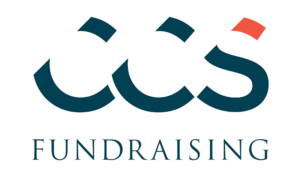A capital campaign is a transformational moment for your school. By effectively engaging your board of trustees, you empower some of your most important friends and donors to help you succeed. When you bring your board “on board,” your campaign will galvanize your school’s community, connect with your volunteer leadership, build a culture of philanthropy, inspire and motivate your donors, and implement your vision for the future.
A culture of philanthropy is one of the most important indicators of success in fundraising, especially when considering the involvement of your board. What does a philanthropic culture look like?
- Everyone has contact with donors, not just development staff.
- Development costs are seen as an investment in your school’s future, not just another line item.
- Donors receive informational reports in addition to recognition. They feel like important insiders.
- Personalized communication has replaced boilerplates. Donors’ interests and issue areas of focus are kept in mind.
- More time is allocated to keeping donors than to acquiring new ones.
For your school to develop a culture like this, it is necessary to start at the top with the board of trustees. A board is responsible for three main arenas for a school: the strategy and direction, or mission and values; oversight and accountability, especially in financial matters; and participation, ensuring the school has the resources it needs to do its work. With this oversight, it is important that the Board accept that philanthropy has a vital role in advancing the school’s mission, then define that role and integrate it into the strategic plan. Once it is considered an essential part of the school’s strategy, communicating that importance becomes much easier.
Another important part of building a culture of philanthropy on the Board and throughout the school is ensuring that board members actually give each year, especially during a campaign. Board members are the leaders of the school and they should be among the first to give. The BoardSource Nonprofit Governance Index from 2012 shows that nearly 75% of nonprofits report a 90-100% giving rate by board members, and that only 64% of nonprofits require contributions from board members. 100% participation from your board members should be an expectation! Since your Board makes up your closest friends and strongest supporters, a demonstration of financial support is essential in making your philanthropic case to others.
Beyond making their own gifts, both in annual giving and especially during a capital campaign, board members are critical fundraising partners. As the volunteer group closest to the organization, their own participating in fundraising efforts sends a clear signal of commitment to others. In the solicitation process, they bring credibility and are one of the strongest voices of support for the organization. During a campaign, board members can play many essential roles:
- Identify, evaluate, and cultivate prospects
- Attend events
- Advocate for the case and articulate compelling arguments for support
- Explain the reasons for the campaign
- Introduce new potential donors and open doors
- Invite friends to events
- Provide leadership in giving and financial expectations of board members
- Serve as solicitors
- Host special events
- Thank donors
In order to involve the board in all these ways in a campaign, you will need to convince them that all of the above is true – that their participation is critical to the campaign’s success, and that their support will inspire the support of many others. Some important messages that they should hear from the development office and the Head of School include:
- We can’t do this without you.
- This is necessary for the school’s future.
- Thank you for your leadership!
- This campaign will change the lives of our students.
- If not you, who?
- Your gift and participation will bring in many more gifts.
Once your board members know how important their role can be and are eager to be involved, they will need some training and coaching to determine the best role for each member. Involve everyone in reviewing prospect lists for connections, and then determine the best possible fit for each board member. When it comes to coaching board members who are doing solicitations, remember:
- Provide specific action items so they have a clear idea of what is expected of them
- Support them before, during, and after each solicitation they are involved in
- Train your board members as you would any other solicitor
- Provide resources: fundraising priorities, case statement, financial goals, brochure, proposal, talking points, gift table, background information, and training on how to handle objections or answer difficult questions
By thoughtfully involving your board of trustees in a capital campaign, you will be able to make your most important group of supporters your biggest advocates. When you take the time to foster a culture of philanthropy at your school, you can turn gratitude and passion into dependable giving. Your board members are your most significant partners, and with their leadership and support, your campaign is certain to achieve success.
More Insights
Your Fundraising Forecast Template for 2024
Projecting fundraising revenue can always feel daunting, especially during economic and political uncertainty. CCS Fundraising is here to help you plan for 2024 and beyond with tactical guidance and a downloadable fundraising revenue forecast template.
The Philanthropy Outlook 2024 and 2025
Strengthen your fundraising strategy this year and next with this data-driven publication, revealing predictive insights for the philanthropic sector in the years ahead.
